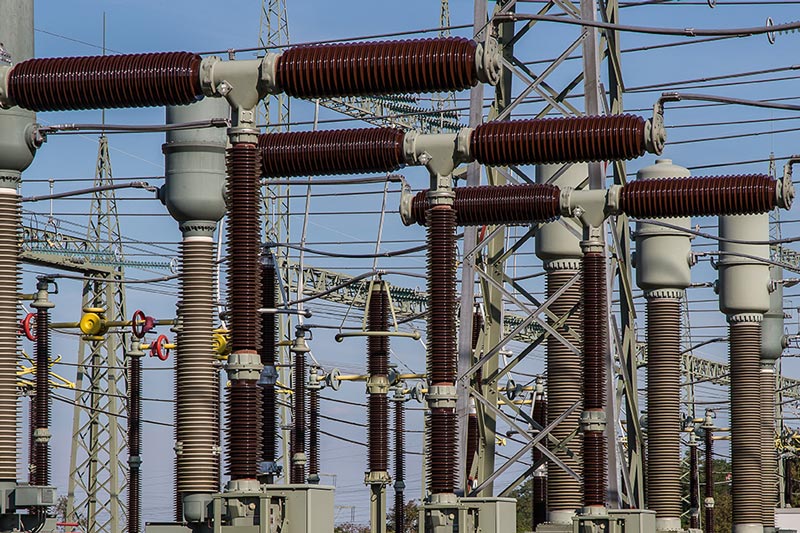Zain Hasnain, Mechanical Engineer
[email protected] | linkedin.com/in/zain-abbas-hasnain
1: Abstract
The power generation and transmission industry are undergoing a paradigm shift, driven by the need for greater efficiency, sustainability, and reliability. Mechanical materials play a pivotal role in this transformation, impacting the performance and environmental footprint of power transmission systems. This research article delves into emerging mechanical materials and their applications in high voltage (HV) and low voltage (LV) transmission lines, as well as transformers, switchgears, and linear assets. The focus is on materials such as advanced conductors, insulation, and structural components, which are poised to revolutionize the industry.
2: Introduction
Power generation and transmission are the lifeblood of modern civilization, and their role in meeting energy demands while reducing environmental impact cannot be overstated. Emerging mechanical materials are at the forefront of innovations that promise to reshape the power transmission sector. This article explores the latest advancements in mechanical materials used in high voltage and low voltage transmission lines, as well as in transformers, switchgears, and linear assets.
3: Emerging Materials for High Voltage (HV) and Low Voltage (LV) Transmission Lines
3.1. Advanced Conductors
Emerging materials for transmission lines primarily focus on conductors that can carry electricity efficiently over long distances with minimal losses.
a. Aluminum Conductor Steel Reinforced (ACSR)
Applications: High voltage transmission lines
Properties: Light weight, high conductivity
Advantages: Cost-effective, good mechanical strength
b. High-Temperature Superconductors (HTS)
Applications: High voltage and low voltage transmission lines
Properties: Zero electrical resistance, high current-carrying capacity
Advantages: Reduced transmission losses, increased efficiency
3.2. Insulating Materials
Insulation is crucial to prevent electrical leakage in transmission lines. Emerging materials offer improved insulation properties.
a. Cross-Linked Polyethylene (XLPE)
Applications: High voltage and low voltage cables
Properties: High dielectric strength, chemical resistance
Advantages: Enhanced insulation performance, reduced maintenance
b. Silicone Rubber
Applications: High voltage insulators
Properties: High dielectric strength, weather resistance
Advantages: Improved outdoor performance, longer service life
4: Mechanical Materials for Transformers
Transformers are vital components in power transmission, responsible for voltage transformation.
Emerging materials aim to enhance efficiency and reduce environmental impact.
a. Amorphous Metal Alloys
Applications: Transformer cores
Properties: Low hysteresis loss, high magnetic permeability
Advantages: Improved energy efficiency, reduced core losses
b. Ester Fluids
Applications: Transformer insulation
Properties: Biodegradable, high fire point
Advantages: Environmental friendliness, reduced fire risk
5: Materials for Switchgears
Switchgears are critical for the safe operation of electrical grids. Emerging materials aim to improve reliability and safety.
a. Sulfur Hexafluoride (SF6)-Free Alternatives
Applications: High voltage and low voltage switchgears
Properties: Low environmental impact, non-toxic
Advantages: Reduced greenhouse gas emissions, improved safety
6: Materials for Linear Assets
Linear assets, such as transmission towers and pylons, benefit from materials that enhance strength, durability, and environmental sustainability.
a. Advanced Composite Materials
Applications: Transmission towers and pylons
Properties: High strength-to-weight ratio, corrosion resistance
Advantages: Reduced maintenance, longer service life
7: Conclusion
The power generation and transmission industry are undergoing a significant transformation, primarily driven by the adoption of advanced mechanical materials. These materials are reshaping high voltage and low voltage transmission lines, transformers, switchgears, and linear assets. Emerging conductors, insulators, and structural components are enhancing efficiency, reliability, and environmental sustainability. They hold the potential to revolutionize the industry by reducing transmission losses, increasing energy efficiency, and lowering environmental impacts.
As research and development efforts continue, the adoption of these materials in the power transmission sector like K-Electric will continue to grow, ensuring a more sustainable and efficient future for power generation and transmission.






